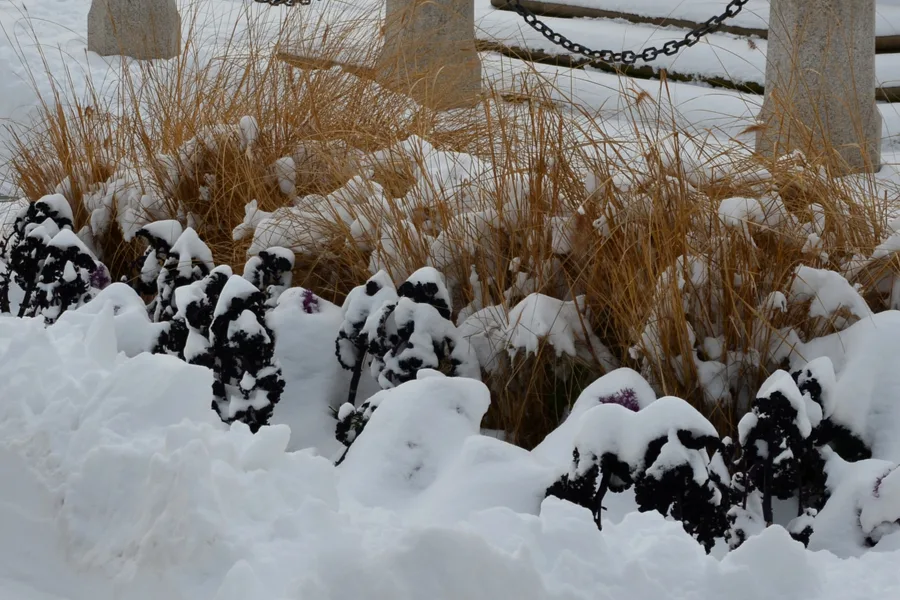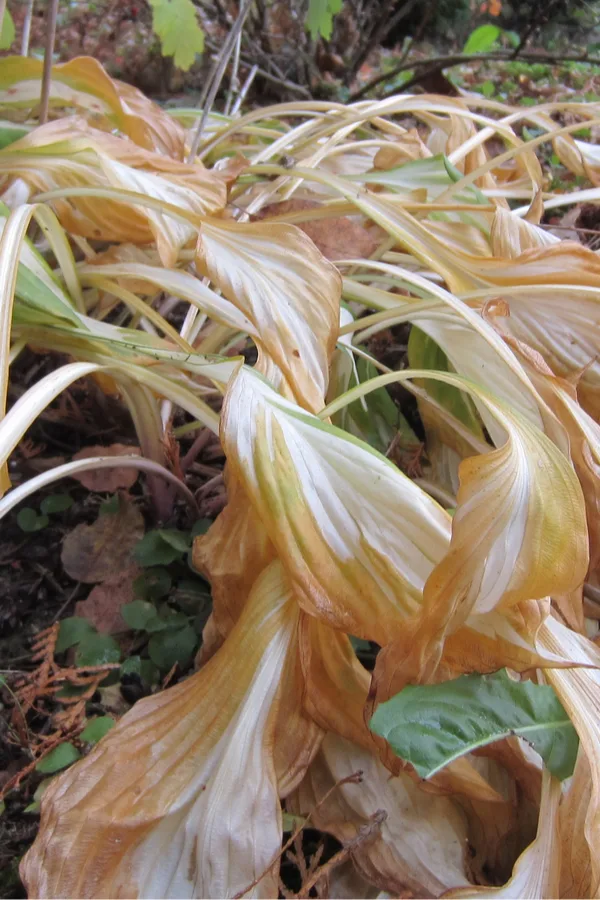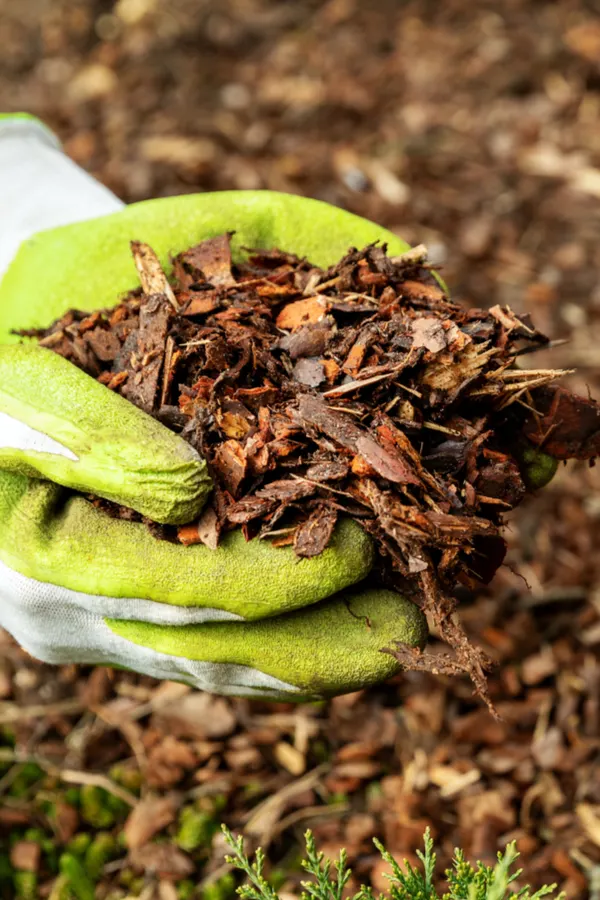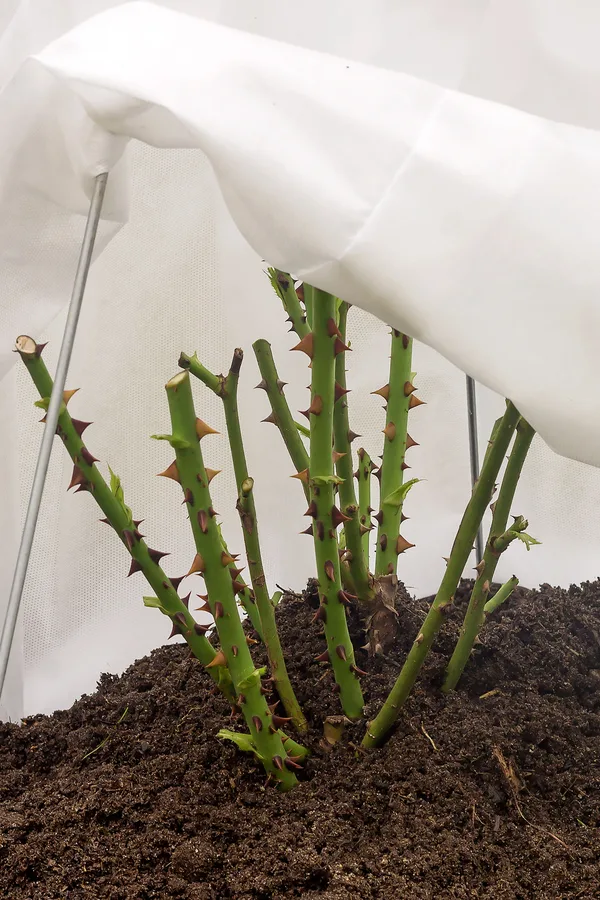One of the best ways to keep your perennial plants healthy, strong and vibrant year after year is to help protect them from the harsh conditions winter can hit them with.
Unfortunately, although many gardeners worry about subfreezing temperatures harming their plants, it is the additional perils of winter that can cause just as much damage, if not more.
High wind, ice, snow, and the constant freezing and thawing of the soil all pose serious issues for perennials. They can injure and weaken roots, and leave plants susceptible to disease, pest damage, or freezing out entirely.
The good news is that providing protection is actually a simple process. And not only does it help guard your plants from injury, it can also create beds that are easier to maintain next spring.

As you will see below, a bit of flowerbed maintenance in the fall can greatly reduce next year’s spring chores. It can also help reduce future weeds, pests and disease too! Here is a look at how to prepare and protect your perennials this fall for the winter to come.
The 3 Keys To Protect Perennials For Winter
#1 Clear Your Flowerbeds
One of the biggest mistakes gardeners make in the fall is to not cut back perennials and clear out their flowerbeds. Beyond leaving beds unsightly, it also sets the stage for major issues. Not just for the upcoming winter, but next spring as well!
Contrary to popular belief, allowing the old foliage of perennials to remain through winter does not help protect plants. In fact, allowing it to stay in place can create a whole host of issues.
First and foremost, the dead foliage provides plenty of cover for garden pests to overwinter. Not only can they hide and survive, they also use the cover to lay eggs. That, of course, leads to even more pests to attack your plants next year.

Finally, leaving foliage in place also provides the perfect medium for disease to find a home. The cold, damp conditions of late fall are prime for letting mold and mildew take hold in the decaying foliage. And once it does, it simply lies in wait to attack next spring.
Cutting Back Perennials – Protect Perennial Plants For Winter
Once the first few frosts have hit your perennial plants and the foliage begins to die off, it is time to get to work. Using a sharp pair of shears, cut back the foliage to within a few inches of the soil line.
Allowing an inch or two of the stems to remain is always a good idea. First and foremost, it helps you identify where plants are located. That can be a big help next spring before new foliage springs forth. But leaving a few inches of stems showing also allows an area for protective mulch to adhere to. More on the mulching part later.
In addition to cutting back spent perennial foliage, now is the time to also clear your beds of any leftover weeds. Weeds, just like perennial plants, can harbor pests and disease as they die off. They also produce and drop seed heads, which can multiply your weed problems next year even more.

#2 Mulch Those Beds! How To Protect Perennial Plants For Winter
Now that your beds are cleared of spent plants and weeds, it is time to mulch! One of the most underrated chores of all when it comes to fall gardening is re-mulching flowerbeds in the fall.
As crazy as it sounds, it is actually just as important for the health of your plants to mulch beds in the fall as it is in the spring and summer. In fact, it may be even more important! Once beds have been cleared of decaying foliage and weeds, apply three to four inches of fresh mulch.
A layer of fall mulch provides serious protection for the roots of your perennial plants. Most importantly, it helps to regulate the temperature soil. For your perennial plants, that means their roots won’t constantly freeze and thaw. And that is a huge key to keeping them safe in the winter.

Perennials have no issue going dormant and freezing a bit under the soil. But when they constantly go from freezing to thawing, they become more susceptible and vulnerable to freezing out. The best defense against that is a thick application of mulch!
Additional Benefits Of Fall Mulching
A layer of fall mulch also prevents weeds and weed seeds from finding a home. Weeds that find bare soil now simply sit and wait until next to spring forth. But a layer of fall mulch keeps those seeds from ever becoming an issue – and that means far less weeding chores next year!
# 3 Providing Extra Protection For Vulnerable Plants – How To Protect Perennial Plants For Winter
Most perennial plants are more than capable of surviving the harshness winter can bring. Hostas, daylilies, black-eyed Susan and many other common perennials need little more than a trim back and a bit of protection from a layer of mulch to survive.
But with that said, there are a few perennial plants and bushes that do require a bit of extra protection. Especially if they are located in an open area that has provides little protection from wind and harsh weather.
Roses, hydrangeas and even rhododendrons all fall into this category. Winter care for roses all depends on the variety, but in general, the more vulnerable the location, the more protection you will need. (See : How To Get Roses Ready For Winter)
For hydrangeas and rhododendrons, a thick 6 inch coating of mulch around the base of plant will help. If plants are in an area prone to high winds or winter damage, you can also use plant covers to help them survive damage free.

These covers slip over plants in the fall to provide extra protection. They also double as a great way to prevent wildlife from eating or damaging foliage through the winter months. Product Link : Garden Plant Cover
Keep in mind, these extreme measures are not usually needed. But they can be employed when there has been a history of perennials sustaining damage in a given area, or you are growing a perennial that pushes the limits of hardiness in your growing zone.
Be Careful Of Salting Sidewalks…
Finally, remember to keep salt and other chemicals used to melt snow away from your flowerbeds this winter. Perennials can be injured or destroyed by excessive salt levels in the soil. If you have perennials planted near sidewalks, use salt with extreme caution.
Here is to keeping your perennials protected this winter!
Follow Our Facebook Page For Great Gardening Tips And Advice! This Is My Garden Facebook Page
This Is My Garden is a garden website created by gardeners, for gardeners. Jim and Mary Competti have been writing gardening, DIY and recipe articles and books and speaking for over 15 years from their 46 acre Ohio farm. They publish three articles every week, 52 weeks a year. Sign up today to follow via email, or follow along!

